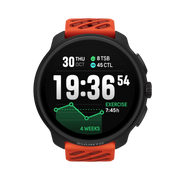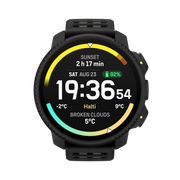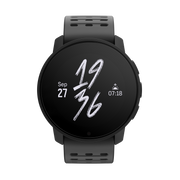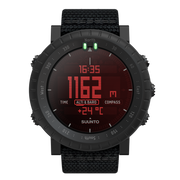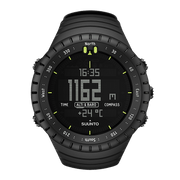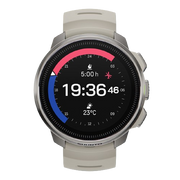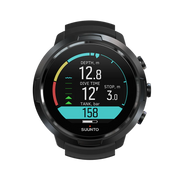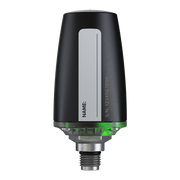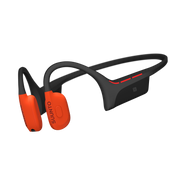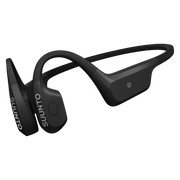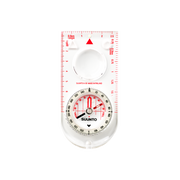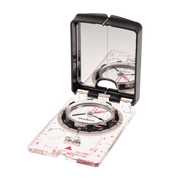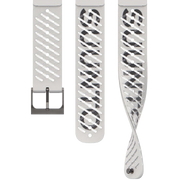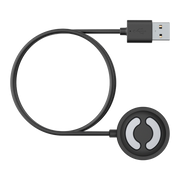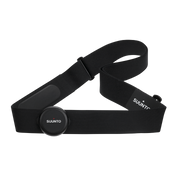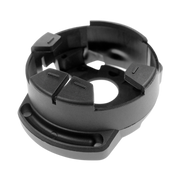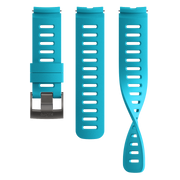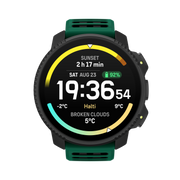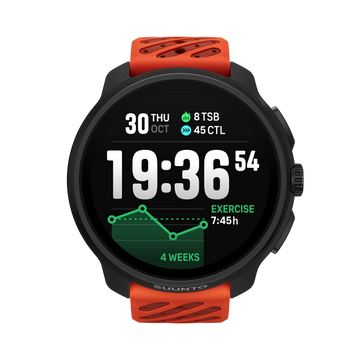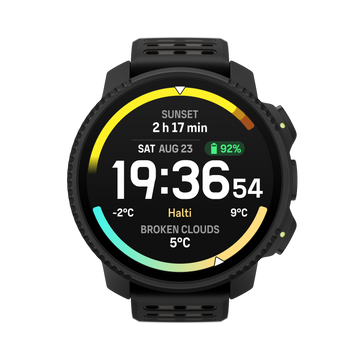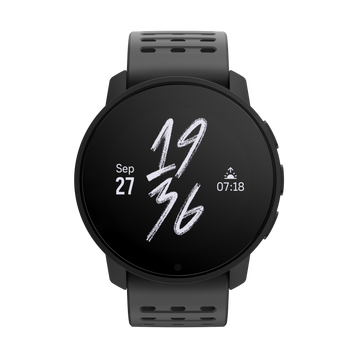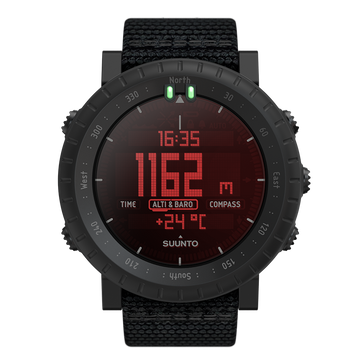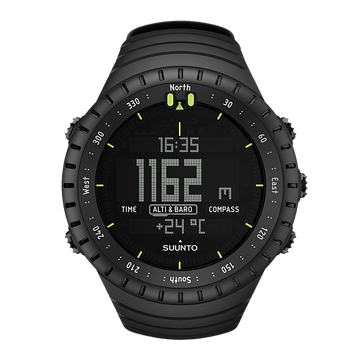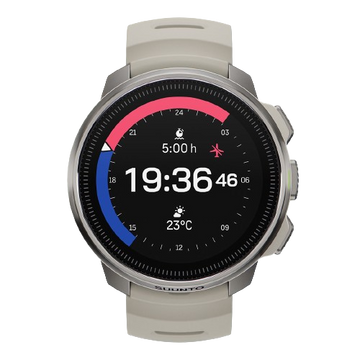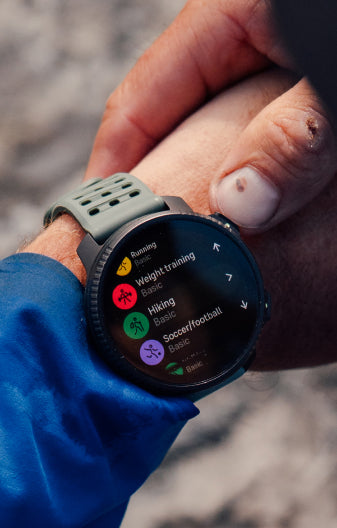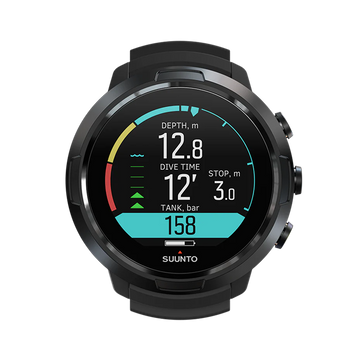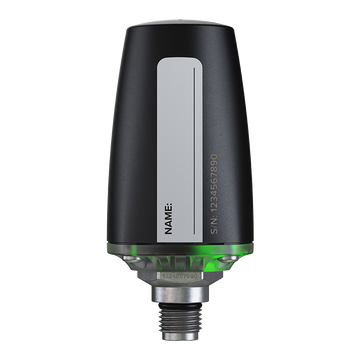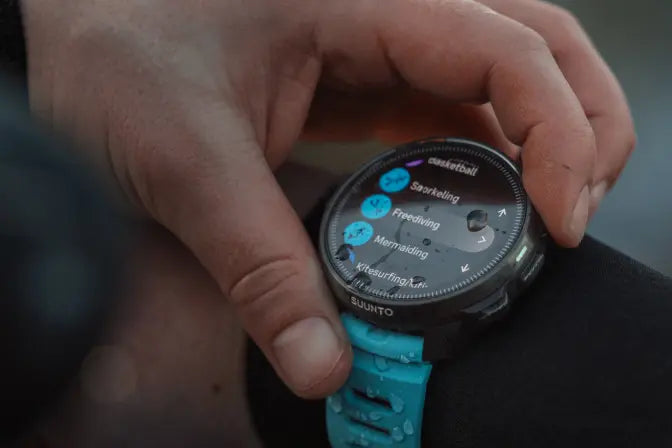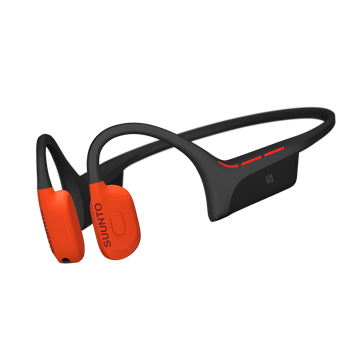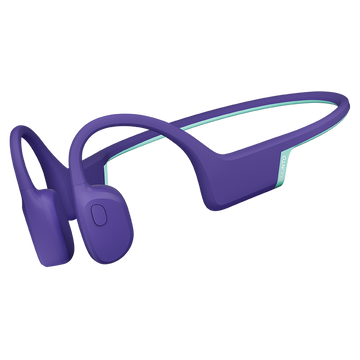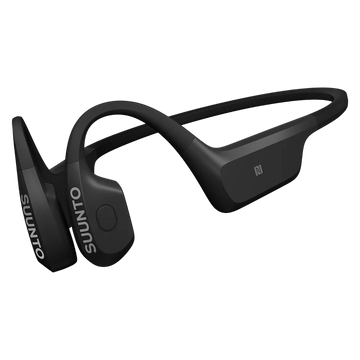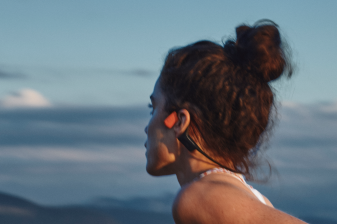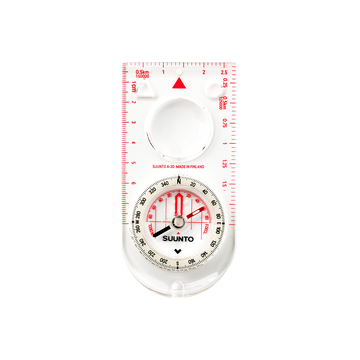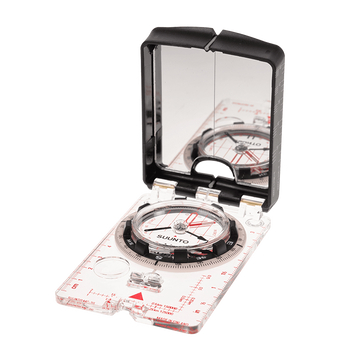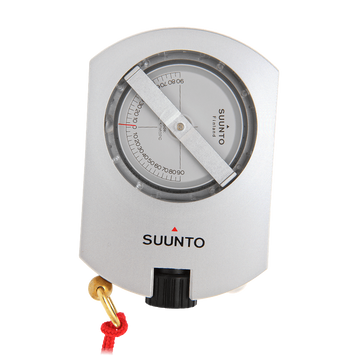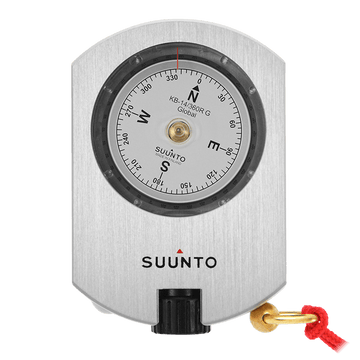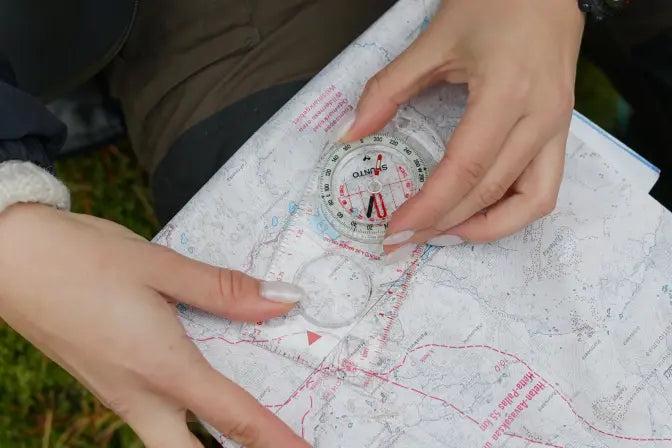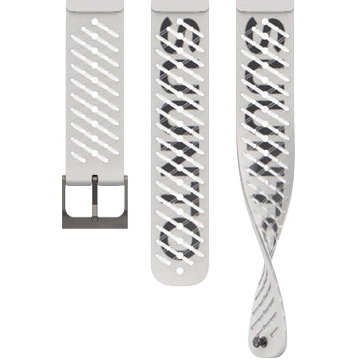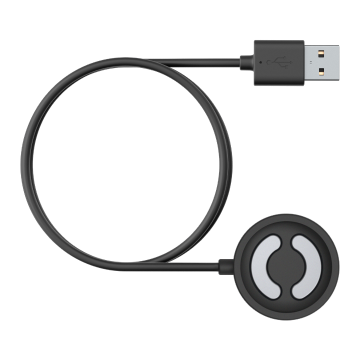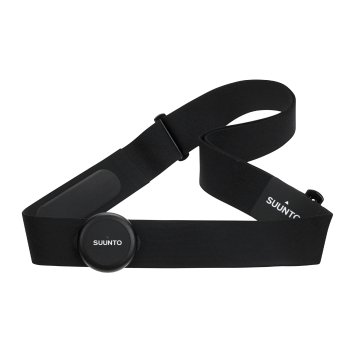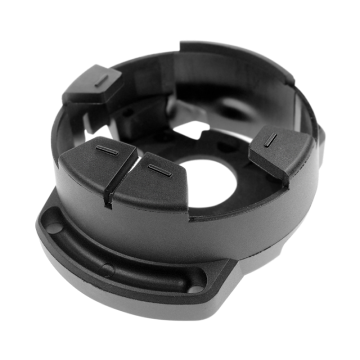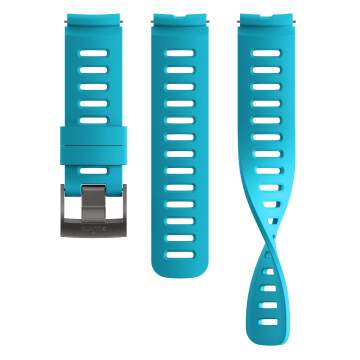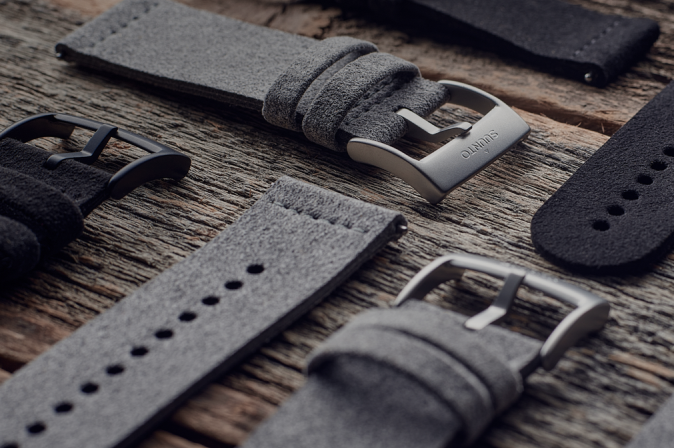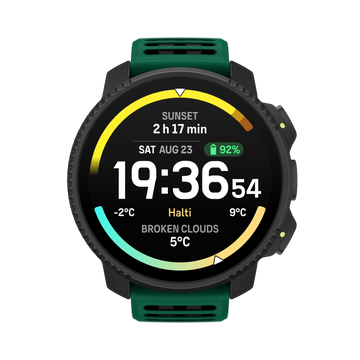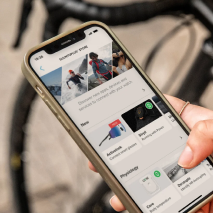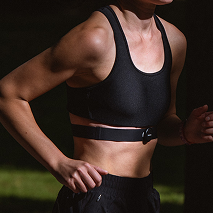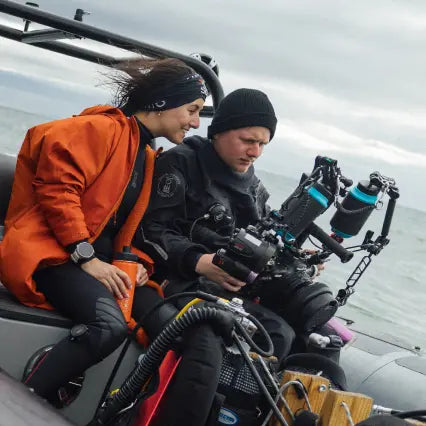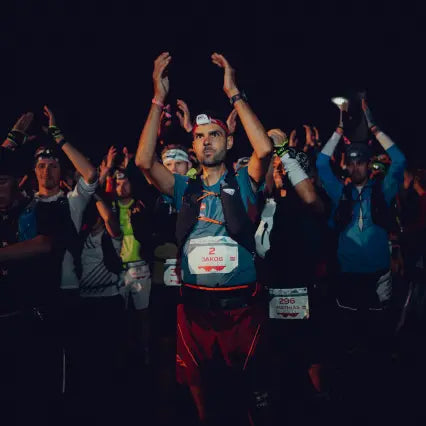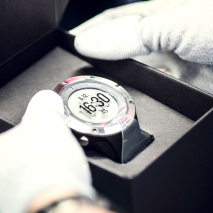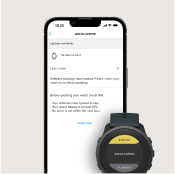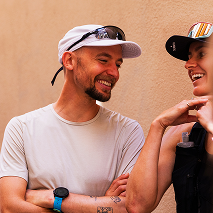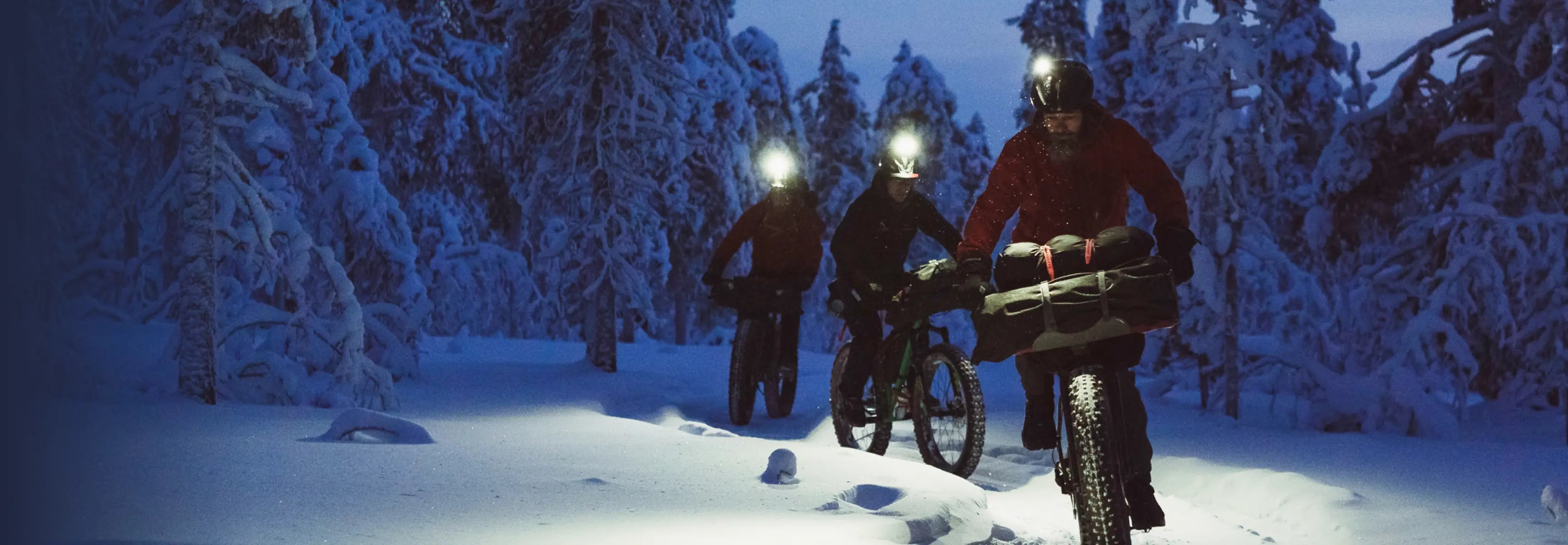
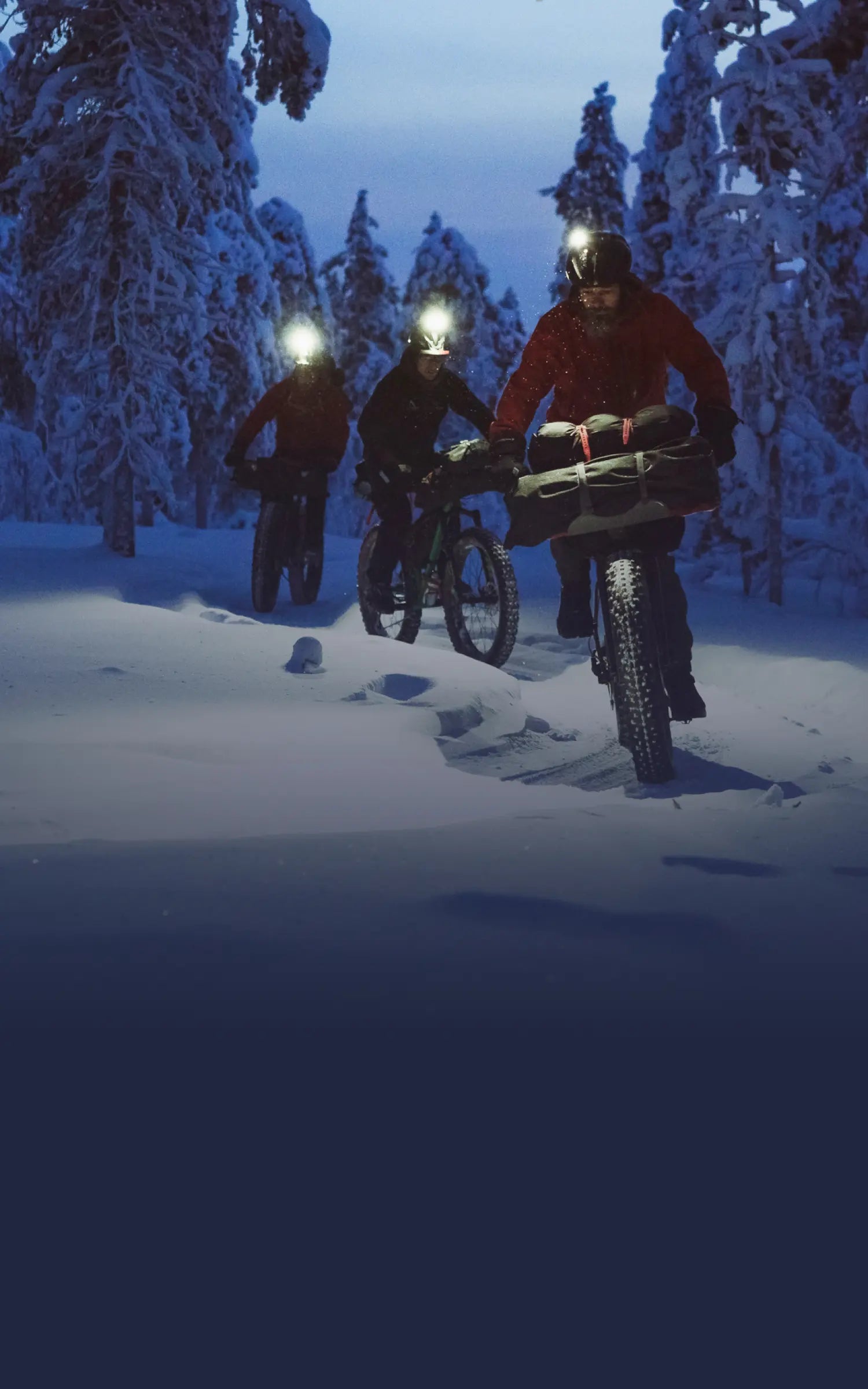
Suunto Blog

Suunto Summit 2017
Watch the video and experience the first ever Suunto Summit that was held in October, 2016.
We are thrilled to share the selections for the Suunto Summit 2017. After hosting an open, public application process, we received inspiring motivation letters and stories from all around the world.
Within our final group we have authors, awarding- winning photographers, influential bloggers; we have XTERRA world-champions, and winners of major ultra-trail races. Balancing these inspiring experiences and accomplishments was a challenge, but we are thrilled to have had so many inspiring applications that shared a synonymous passion for being a part of the Suunto community.
Stats:
6 female, 9 male
9 from Europe (2 France, 1 Spain, 1 Finland, 2 Sweden, 1 Norway, 1 Latvia, 1 UK, 1 Switzerland)
2 from USA, 1 from New Zealand, 1 China, 1 Malaysia.
Suunto Summit 2017 participants:
Arnau - Spain
Diane-Perle - Switzerland
Marta - Latvia
Marit - Norway
Mia - USA
Barbara - USA
Petra - New Zealand
Ramon - Malaysia
Sebastien - China
Pelle - Sweden
Jean-François - France
Tim - United Kingdom (UK)
Mathias - France
Sante - Finland
Oskar - Sweden
Congratulations to all selected, and a huge thank you to all who applied and shared their passion with us!
- Suunto Team

VO2 MAX IntervalS with XTerra champion Josiah Middaugh
In modern times, interval training is a fundamental way to train endurance performance. I overheard my 10-year-old telling his brother, “the best way to get faster is to do intervals, that’s what my gym teacher said.” For the general public, any intervals will do, but for the highly trained endurance athlete we need to get a little more scientific.
The basic premise of interval training is that you are able to swim, bike, or run at a higher intensity if your training is intermittent versus continuous. A 5k runner, for example, could head out the door and cover 3.1 miles as fast as possible a couple times a week, but would have a hard time holding their goal pace for much more than one mile. Instead, if the training was broken into half mile intervals, a race-pace could be achieved with every 800 meter bout as long as recovery was adequate. With each repeated bout there is a cumulative effect, up to a certain point, to stimulate adaptation. Beyond a certain point, maladaptation can occur.
Types of Intervals
In an effort to simplify we will focus our discussion on the most potent type of intervals known as VO2 max intervals. VO2 max is defined as an individual’s highest rate of oxygen consumption (milliliters of oxygen per kilogram of body weight per minute). A common misconception is that interval training is strictly anaerobic. These types of intervals do have a big anaerobic component, but by definition have you operating near your peak oxygen consumption, which is the key. Most athletes can work at VO2 max for only about 5 to 9 minutes, so intervals at VO2 max need to be shorter than that. If the interval is too short, then the anaerobic contribution is big, but there is not enough time to actually get to VO2 max. Personally I like 2-3 minutes ON with about equal recovery.
Pacing Strategy
Pacing is critical. Suppose you are running those 800 meter bouts and you start out by sprinting the first 200 meters and then have a gradual slow-down for the next 600 meters. Your average pace might be on target, but you have failed to reach VO2 max since you started with this huge anaerobic effort and then settled into a pace slower than your VO2 max intensity.
There is something called a slow-component to VO2 max. This means that for any pace above lactate threshold, you will eventually reach VO2 max if the exercise is continued. So you do want to go fast, but to spend the most amount of time near VO2 max, you want a pace you can sustain for 2-3 minutes. If performed correctly your oxygen consumption will approach VO2 max about half-way through each hard effort. So if your workout is 6 x 2.5 minutes, you might in reality only spend a total of 7.5 minutes at VO2 max, which is fine. If performed poorly you may only spend a few seconds of each interval at VO2 max or none at all.
Graph 1: Poor pacing strategy with high power output (purple) at the start of each bout and power dropping on each bout.
Graph 2: Better pacing strategy here. In this case, power (purple) within each bout was very consistent, but there was still a drop off in power for the last 3 bouts.
Graph 3: Power (white) fairly consistent throughout hard efforts. Notice peak heart rate (orange) is not achieved until the 6th bout. Different athletes, different software.
Work:Rest Ratios
An ideal range for work portion is about 1.5 to 4 minutes. We like the 2-3 minute range the best with a few exceptions. Work to rest ratios are usually around 1:1. The rest interval can be adjusted to increase or decrease the intensity of the workout. If you are having a hard time keeping pace, try adding 30 seconds rest. If you are completing the workout with energy to spare, try 30 seconds less rest the next time out.
How Intense?
Pace or power are your best guides for this type of training. Heart rate lags so far behind that it is not the best indicator and you don’t want to try to spike your heart rate to start each effort.
If you have power on the bike, I like to use 110% FTP for 3 minute bouts, and 115% FTP for 2 minute bouts.
For running, a 5k race pace or slightly faster will get you there. A 15 minute 5k runner can just use their 5k pace, but a 25 minute 5k runner might need to increase the pace slightly.
If you are performing intervals uphill and don’t have power or pace to guide you, try this approach. Warm up to the base of consistent climb. On your first bout, hold back a fraction and note your distance at 1 minute and 2 minutes. Make a mark in the dirt. Recover on the downhill and repeat the same section of the hill attempting to at least reach the same finishing mark or go slightly further. Try to do this without going any further for that first minute.
How Much?
I mentioned earlier that this is the most potent form of training. So your goal is to be able to maintain the quality for the entire workout. For most people this means 15-21 minutes of total hard work. So that is 8-10 bouts of 2 minutes, or 5-7 bouts of 3 minutes. Keep it simple. Shoot for a very similar intensity every time and if you start to slow down you have done too much.
How Often?
A little bit can go a long way. I try to space out this type of training more than any other. For most people that means two quality sessions per week with one on the bike and one on the run. Training becomes more polarized during a VO2 max cycle with recovery and endurance workouts separating VO2 max bouts. Total training volume is reduced and avoid excessively long workouts during this time.
Soon Ripe, Soon Rotten
With this type of training, most people will plateau in about 6 weeks. I like to sprinkle in this type of training as key races are approaching and save heavy blocks of VO2 max interval training for the most important races of the season.
Josiah Middaugh is the reigning XTERRA Pan America Champion and 2015 XTERRA World Champion. He has a master’s degree in kinesiology and has been a certified personal trainer for 15 years (NSCA-CSCS).
Get to know Josiah
Learn how to use Suunto Spartan's Interval feature

Suunto Summit 2017 Recap
The post-race sauna and making new friends with some reindeer might have helped but really we came to realise our connection is rooted in our shared passion for sport and the outdoors.
"Meeting outdoor enthusiasts from all over the world and learning their stories and sharing our passion for different sports was truly inspiring." -Philipp Reiter, trail runner and photographer, Germany (Image by Oskar Henriksson)
"The Suunto Summit was a great experience that felt like i was a part of a family with a shared passion for the outdoors." -Arnau Martorell Sala, Spain
"The summit brought a whole new, and overwhelming sense of joy to meet so many open and strong athletic women who are excited to get out there. It was comforting to not feel alone or intimidated." Mia Morandi, USA.
"Listening to all the experiences of my fellow Suunto Summiteers has left me inspired and completely in awe…and mingling with the team behind Suunto was absolutely invaluable. It has been such a privilege to be here." -Ramon Fadli, Malaysia.
"Bravo! I’ve loved Suunto 20 years, I love you even more…" -Barbara Edelston Peterson, USA
"It really has been a unique experience and a wonderful opportunity to meet the people at the heart of Suunto and to leave Helsinki feeling part of the family. Thank you all, you guys rock!" -Tim Major, UK
We are grateful to have shared the experience with such an incredible group, and agree with one of our participants, Pelle Nyberg, from Sweden, that the "Suunto Summit captures the essence of the community."
All images by Philipp Reiter

5 proven ways to improve running economy
“Running economy is the holy grail for distance runners, not a high VO 2 max,” writes Josiah Middaugh , XTERRA World Champion and a professional coach. Read on to learn more.
Running economy is the holy grail for distance runners. It was once thought that a high VO2 max was the discriminating factor for distance running performance. However, among a homogenous group of runners, VO2 max is not correlated with performance. It turns out that running economy plays a more crucial role.
For many years the Kenyans and East Africans dominated middle distance events and it was thought their aerobic capacity due to altitude training and genetics were superior, but that is not the case. Their VO2 max values were no better than world class athletes from all over the world and athletes from other endurance disciplines. Remarkably, some East Africans were able to run exceptional times with moderate aerobic capacities. The most economical distance runner ever measured could run 1500m in 3:35 with a VO2 max of only 63 ml/kg/min (Foster and Lucia, 2008).
Increase stride rate
Running mechanics can be very complex. Compared to novice runners, elite runners tend to have a shorter ground contact time, less braking forces, less vertical oscillation, less energy expended in the frontal plane, specific joint angles during phases of the run gait, and less oxygen consumed for any given pace. To think of several these things at once will probably not be helpful. Increasing stride rate can be a simple solution to a complex problem.
My former professor and world renowned running coach Dr. Jack Daniels observed that Olympic distance runners had very similar stride rates in all of the long-distance events. The stride rate he observed was over 180 steps per minute. Most novice runners tend to be closer to 160 steps per minute which causes longer ground contact time, increased braking forces, and more vertical oscillation. Visually, efficient runners experience ground contact occurring under your center of gravity (instead of out in front), less heel striking, and a smoother, less loping stride. Simply increasing stride rate without increasing pace will solve several biomechanical issues at once. As pace increases, stride length increases while stride rate remains mostly unchanged.
To master, I like to practice the quick turnover at easy to moderate speeds where it might not feel as natural. Even speeds as low as a 12 min/mi pace, it is possible to maintain a stride rate of 180 steps per minute. Think about your legs acting as wheels while your roll over the ground like road runner, rather than like pogo sticks slamming into the ground. Initially a quicker turnover might be less economical as you retrain your neuromuscular system. However, the upside will be worth it with improved running economy and less impact.
Increase mileage
Running economy has been found to fluctuate in distance runners from season to season depending on total running mileage and from year to year. In a group of elite runners, during the road racing season when mileage was higher, running economy was better compared to spring track season when mileage was lower (Kubo et al., 2010). Another study found a cumulative effect on running economy based on total running mileage in a career having a stronger effect than current running mileage (Midgley et al., 2007).
Single sport distance runners and coaches have long known the benefits from higher mileage, but simply increasing mileage linearly can lead to a slippery slope of injury, burnout, and overtraining. Although open for interpretation, these studies show the importance of consistency over time. For multi-sport athletes they imply that there may be some benefit to an off-season run focus, increasing run frequency if running is a limiter, and consistent long runs throughout the year. When increasing mileage, a conservative approach to avoid injury is to limit total mileage increases to ten percent per week, but with undulation and not linear progression.
Strength training
Strength training has the potential to improve running economy and prevent injury in a few different ways. Although running doesn't require an extremely high level of core strength, many distance runners are deficient. I like the definition of core strength as lumbo-pelvic-hip stability. With running, you are either in the air or in a single leg stance. The single leg stance requires proper timing and recruitment of this core musculature to prevent too much wasted energy. Approximately 20% of expended energy while running is spent stabilizing in the frontal plane (side to side).
Another way strength training can improve running economy is neuromuscular and structural. Replacing a portion of running volume with a small amount of heavy strength training has been shown to improve musculo-tendon stiffness, and neuromuscular efficiency. They key here is to make sure that strength training remains supplemental and replaces some of your total training volume so you aren't just increasing fatigue.
"Functional body mass uses energy but is also used to propel you forward," says Josiah Middaugh.
Lose non-functional weight
This is pretty simple and straightforward and doesn't apply to everyone. Unlike swimming, or cycling on flat ground, running economy is always dependent on total body weight. I like to think of running as a series of falls and with every stride you must lift, catch, and support your body weight. Carrying less mass will use less energy. The key here is to focus on mass that is not functional such as body fat. Small increases in lean body mass (muscle) do not affect relative running economy. Functional body mass uses energy but is also used to propel you forward, so carry what you need but not anything extra.
Perform plyometrics
Plyometric training can be a shortcut to improved running economy. Like strength training, it is important to replace a portion of training volume with plyometric training and not add it on top of your training load. Plyometrics are generally considered high intensity although most people can perform lighter versions of plyometrics called form drills. Some examples include high knees, power skipping, bounding, double and single leg hops. The mechanism has most to do with the stiffness or responsiveness of the muscle-tendon complex (Spurs, et al., 2002). A small amount can go a long way with plyometrics, so perform high intensity plyos when fresh and limit total jumps to about 200 per session. Performed 2-3 sessions per week, running economy can be improved in as little as six weeks of plyometric training (Saunders et al., 2006).
Josiah Middaugh is the reigning XTERRA Pan America Champion and 2015 XTERRA World Champion. He has a master’s degree in kinesiology and has been a certified personal trainer for 15 years (NSCA-CSCS).
Images by Matt Trappe
References
Foster, C., & Lucia, A. (2007). Running economy: the forgotten factor in elite performance. Sports Medicine, 37, 4-5, 316-319.
Kubo, K., Tabata, T., Ikebukuro, T., Igarashi, K., & Tsunoda, N. (2010). A longitudinal assessment of running economy and tendon properties in long distance runners. Journal of Strength and Conditioning Research, [E-pub ahead of print]
Midgley, A., McNaughton, L., Jones, A. (2007). Training to enhance the physiological determinants of long-distance running performance: can valid recommendations be given to runners and coaches based on current scientific knowledge? Sports Medicine, 37(10), 857-880.
Yoshida, T., Udo, M., Chida, M., Ichioka, M., Makiguchi, K., & yamaguchi, T., (1990). Specificity of physiological adaptation to endurance training in distance runners and competitive walkers. European Journal of Applied Physiology, 61, 197-201.
Saunders, P., Telford, R., Pyne, D., Peltola, E., Cunningham, R., Gore, C., and Hawley, J. (2006). Short-term plyometric training improves running economy in highly trained middle and long distance runners. Journal of Strength and Conditioning Research, 20, 4, 947-954.
Spurrs, R., Murphy, A., & Watsford, M. (2002). The effect of plyometric training on distance running performance. European Journal of Applied Physiology, 89, 1, 1-7.

Intro to distance running technique
Stride rate
Despite the running speed, stride rate should stay within a narrow range. At race pace, cadence should be at or above 180 steps per minute, or 90 revolutions per minute (counting one leg). Suunto uses revolutions per minute, so a good goal at race pace is 90-92 revolutions per minute. During training, endurance pace for example is considerably slower, however cadence should still be close to that 90 rpm mark. I shoot for 86-90 rpms no matter how slow I am running. This means a shorter, quicker stride for endurance and recovery paces.
Foot strike
As your foot swings through and the leg extends out in front, most people set the foot down too early, creating a breaking force, heel strike, and high impact. Instead, paw back and contact the ground under your center of gravity with a softer landing propelling you in the direction of travel.
Vertical oscillation
A long, loping stride has a larger vertical component, which results in more distance traveled up and down. Think of your legs as wheels rather than pogo sticks. One way to see this is to have someone video you running along a fence and see the vertical displacement.
Running tall
This is a good mantra for any runner to keep in mind. This means maintaining a strong core, posture, and head position. Look forward towards the horizon. Imagine you are a marionette doll with a string holding you up from the top/back of your head. Uphill, think about staying vertical. For gradual downhills, lean forward so you are perpendicular to the slope.
Slight forward lean
Running tall, but with a slight forward lean. Running is a series of falls, so you want a slight forward lean which is more pronounced at fast running speeds. Do not achieve this from bending forward at the waist. You should have a straight line from your ground contact point, up through the top of your head. One drill I like is a sprinting drill called “falling starts.” Start by standing tall and then fall forward with the fulcrum point at the balls of your feet, staying long with no breaking at the waist. You will want to step forward to catch yourself, but instead of a step, immediately break out into a fast run.
Arm carriage
Your arms are your counter weights so movement is good, but it should happen naturally and without expending extra energy. Straight on, hands can swing towards the center line, but should not cross. Elbow should be bent with a slightly acute angle, less than 90 degrees to keep the lever arm short. Be careful not to carry your arms too high or elbows to wide, which results in excess strain on your shoulders, upper traps, and neck. Keep hands relaxes as if you are carrying a fragile egg in each hand.
Josiah Middaugh is the reigning XTERRA Pan America Champion and 2015 XTERRA World Champion. He has a master’s degree in kinesiology and has been a certified personal trainer for 15 years (NSCA-CSCS).
Images by Matt Trappe

Simon Donato takes on The Grouse Grind
The Grouse Grind is an iconic trail up the face of Grouse Mountain, overlooking Vancouver, British Columbia, Canada. The trail is 2.9 kilometers long, with an elevation gain of 853 meters. Locals often refer to the trail as “Mother Nature’s Stairmaster.”
On Tuesday, June 20th Suunto Canada will be sponsoring the Suunto Multi-Grind Challenge. From dawn till dusk, racers will challenge each other to achieve the most Grouse Grind ascents in a one-day period. The current Multi-Grind Challenge record is 16 ascents! Or, over 13,500 meters of climbing!
What appealed to you about this race?
I’m attracted to this race because it’s got all the elements that I enjoy: Long day, vertical terrain, legendary route, and I know that I’ll get to face some mental battles along the way. The Grouse Grind is such an iconic route that one lap just doesn’t do it justice.
Any tips for tackling the Grouse Grind? There’s a lot of steps…
haha - Indeed. As with most really huge endurance challenges, this race will be won in the mind - not the legs. My goal is to keep the steps smooth and natural, not to push the pace too hard in the early stages, and try to keep it comfortable for as long as possible.
Have you ever done anything like this before?
I’ve never done a “stair climb” or “vertical” challenge per se, but I’ve put in many long days in the Canadian Rocky Mountains, both hiking and running for fun or chasing FKTs.
Any special strategies for tackling this much ascent in such a short time frame?
This race is unique because you get to rest on the descent by taking the Grouse Mountain Skyride, so trying to time things in such a way that you are not waiting for a tram car is critical. Eating, gear changes, etc., will all have to be done on the tram ride between ascents. One of the main goals is to climb at a very steady tempo - so that my splits are extremely similar lap - lap and avoid wasted time.
What will be your nutritional plan for the race?
My plan will be to take in as many calories as my body can handle - especially late in the race as that’s when I typically fade due to fatigue and a reduced desire to eat. Fatigue makes eating harder, and not eating enhances fatigue -it’s something I’ve struggled with in the past. In terms of calories - I’m going for as much real food as possible - and of course lots of Stoked Oats.
What performance metrics will you be focusing on during the race?
My biggest goal will be to maintain even splits…even if it feels painfully slow in the early stages. There is no benefit to reaching the summit after a hard push only to wait for the tram to arrive and take you back down.
Most importantly, the current record is 16 Grinds, how many do you think you can do?
Ha ha, the million dollar question. I would be happy with 14, and thrilled with 15.
What keeps you motivated during the climbs? How do you stay focused on the trail?
Motivation has always been about doing my best. It’s a question that I ask myself regularly during tough events and helps me push through the most difficult spots. In this case, I won’t be motivated by an absolute number, but more in maintaining a specific pace, and sticking to a well-designed nutrition plan.
How does your Suunto help you succeed in events like these?
I’ve always loved Suunto products - ever since I got into adventure racing in 1998. I think the bottom line is that I trust Suunto products - from watches to compasses and in a race where pacing is critical to success, having a watch (Suunto Spartan) that I trust gives me peace of mind. I know the watch will go as long as I do on the day and give me the metrics that I need to do my best - simple as that.
Any advice to newcomers of the Grind?
The Grind is an epic climb for many reasons, and tackling the Multi-Grind Challenge will move that needle well into the redzone. The most important elements to success in my opinion are setting goals (pacing, duration, etc.), managing nutrition, and adhering to a well thought out race plan. Really difficult events will challenge even the most hardened competitors and if there is no plan, or commitment to achieve a goal, then it’s always easier to throw in the towel when the going gets tough. Little things like appreciating the experience when you’re riding a high, to understanding that the lows don’t last forever will help pull athletes through this test!
Image of Simon Donato © Luis Moreira/Adventure ScienceGrouse Mountain images © Grouse Mountain
